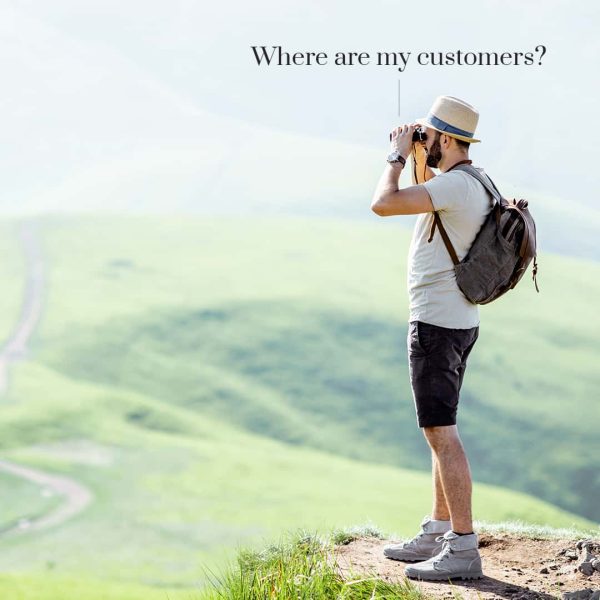Taking a Quick Look at Reserve with Google
Earlier in February, FareHarbor announced that they have partnered with Reserve with Google and it occurred to us that we haven’t talked enough about Reserve with Google on our blog. While Reserve with Google isn’t brand new, it is becoming increasingly important to the tours and activities industry and we’d like to explain what exactly Reserve with Google is, the significance of its partnership with FareHarbor, and the benefits and limitations associated with it.
What is Reserve with Google?
Reserve with Google was created to make it easier for users to book appointments in spas, gyms, yoga studios, etc by adding a booking function on Google’s search engine results page (SERP) and Google Maps. Essentially, it allows users to book with your business without even visiting your website, and it pulls in dates, times, and availability from your booking system. While Reserve with Google wasn’t originally intended for the tours and activities sector, it’s clearly a good fit, so its integration into tourism brands has happened gradually since Reserve with Google came out in 2017.
What is the Significance of FareHarbor’s Partnership with Reserve with Google?
This is significant for two reasons: if you already have an account with FareHarbor, it will be fairly easy for you to set things up. It is also significant because FareHabor is one of the biggest booking platforms designed specifically for the tours and activities industry, so their integration with Reserve with Google indicates that we’re going to see a much higher number of tours and activities companies with Reserve with Google functionality. Essentially, we think this should serve as the final push brands need to do the work and get their own website integrated with Reserve with Google.
What are the Benefits of Reserve with Google?
Ultimately, the benefits of using Reserve with Google totally depend on the nature of the product you’re selling, its location, and its price. It also depends on the quality of your website. If you’re selling a tour or activity product that is already quite well known, then giving users the opportunity of booking on a Google SERP or on Maps can be a great way to add another touchpoint between you and your customer. It can make it even easier for busy (or lazy…) customers to book your product without the added time required to click through one or two pages on your website.
Reserve with Google is also ideal for small businesses based in great locations, as the ability to book on Google Maps means that they can compete on Maps in a way they perhaps can’t compete for the top ranking on Google Search. Let’s say you sell Vatican Tours in Rome and you’re based incredibly close to the Vatican. When people look for tours on Google Maps, they are perhaps more likely to find your business than some of your biggest competitors. This could make the address of your business into a huge asset.
Another benefit to Reserve with Google is that it may convert users better than your site if your site looks a little old-fashioned or if its design and UX is less appealing than your competitors. Everyone’s listing on Reserve with Google looks the same, so it puts all brands on an even playing field.
The last benefit we’d like to discuss is that Reserve with Google is absolutely free at the moment, with no commission going to Google. This will probably change in the future, so we recommend taking advantage of it while it’s free.
The Limitations of Reserve with Google
While there are lots of benefits to Reserve with Google, it’s not without its limitations. If the tour or activity you’re selling is very popular, with a lot of competition, you are going to struggle to rank first on Google’s SERPs. And this matters because it’s only the top listings that tend to have the Reserve with Google booking function on SERPs. You will (hopefully), rank top for your own brand, but if you don’t rank highly for some important keywords, it’s unlikely that you’ll get many bookings from Google Search.
Equally, if your tours or activities are typically more expensive or may be considered luxury, then it is unlikely that many people will make a booking straight from Google’s SERP or on Maps. This is just a simple psychological factor: when a product is more expensive, users need to be reassured that a brand is trustworthy before they buy, but they also need more information about the product before they are comfortable parting with a larger amount of money. If you sell luxury cruises, for example, your typical customer journey probably consists of a period of research, where they compare and contrast a few different offers and a few different tour companies. They will go deep into all of the companies’ websites, and they will probably never make a purchase from Google Search or Maps.
Additionally, if selling your product typically relies on visual assets – on great photographs and perhaps videos – then it’s less likely that a customer will convert simply from a SERP or on Maps. It’s obviously still possible, but we think it’s important to understand the limits of Reserve with Google, as well as its benefits.
There is so much more we could say about Reserve with Google, but this blog is already quite long… Reserve with Google is obviously a really useful feature and we’d recommend putting some time and energy into setting it up for your business. Or, we could do it for you. If you need any help with Reserve with Google or with your various other digital marketing processes (SEO, content marketing, social media, PPC), then please feel free to get in touch with us!
Need more free advice?
Chris and his team will send you a weekly email offering high-value insight and advice about a variety of marketing and business development topics related to the tourism industry. We address specific destinations, tours and activities, and the hotel industry. We also provide important travel industry news and updates.

